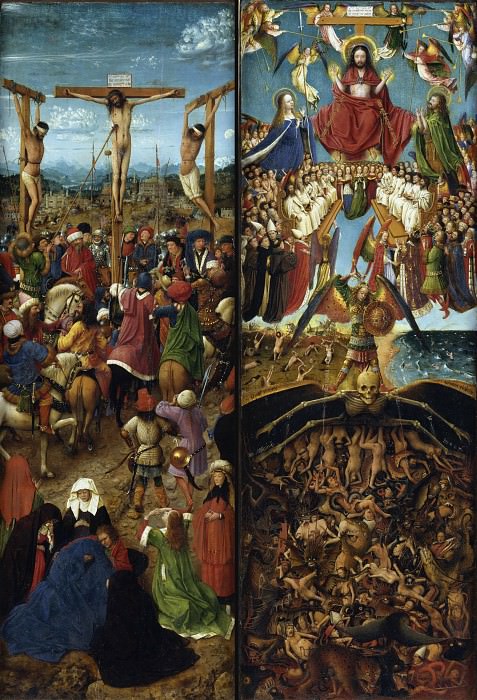The Essence of Surrealist Art
Surrealism, a movement that began in the early 20th century, has captivated audiences with its dreamlike qualities and unorthodox approach to reality. The movement, initiated by André Breton in the 1920s, was a reaction against the rationalism and materialism that dominated the period. Surrealist artists sought to explore the unconscious mind, liberate the imagination, and reveal deeper truths through their art.
Origins and Influences
The origins of surrealism can be traced back to the horrors and disillusionment of World War I. Many artists and writers of the time were disenchanted with the values of Western civilization, which they felt had led to the conflict. Inspired by the revolutionary ideas of Sigmund Freud and his theories on the unconscious mind, surrealists believed that true creativity emerged from the depths of the subconscious.
Freud's work on dreams and the irrational aspects of the human psyche provided a theoretical foundation for surrealism. The movement was also influenced by earlier artistic movements such as Dadaism, which rejected conventional aesthetics and embraced chaos and absurdity. Dadaists like Marcel Duchamp and Tristan Tzara laid the groundwork for surrealism by challenging traditional notions of art and encouraging spontaneous, anti-rational expression.
Key Figures and Their Contributions
Surrealism brought together a diverse group of artists, each contributing their unique perspectives and techniques to the movement. Salvador Dalí, one of the most famous surrealists, is known for his bizarre and fantastical imagery. His painting "The Persistence of Memory" (1931), featuring melting clocks in a desolate landscape, has become an iconic symbol of the movement. Dalí's meticulous, realistic style contrasted with the irrational content of his work, creating a sense of uncanny realism.
René Magritte, another prominent surrealist, used everyday objects in unexpected ways to challenge viewers' perceptions of reality. His painting "The Treachery of Images" (1929), which depicts a pipe with the caption "Ceci n'est pas une pipe" ("This is not a pipe"), plays with the relationship between objects and their representations. Magritte's work often forces viewers to question their assumptions and consider alternative perspectives.
Max Ernst, a pioneer of surrealist techniques, experimented with methods such as frottage and grattage to create textured, abstract compositions. His innovative use of collage and automatic drawing allowed him to tap into the unconscious and produce works that defied rational explanation. Ernst's "The Elephant Celebes" (1921) is a notable example of his ability to blend reality and fantasy seamlessly.
Techniques and Methods
Surrealist artists employed a variety of techniques to access the unconscious mind and express their innermost thoughts and desires. Automatic drawing, a method popularized by André Masson, involved creating images without conscious control, allowing the hand to move freely across the paper. This technique aimed to bypass rational thought and tap directly into the subconscious.
Exquisite corpse, a collaborative drawing game, was another popular surrealist method. Participants would take turns adding to a drawing without seeing the previous contributions, resulting in a collective artwork that combined disparate elements into a cohesive whole. This technique emphasized the importance of chance and spontaneity in the creative process.
Collage and photomontage were also widely used by surrealist artists to juxtapose unrelated images and create new, surreal compositions. Artists like Hannah Höch and Man Ray utilized these techniques to challenge conventional notions of reality and explore the boundaries between art and everyday life.
Surrealism in Literature and Film
While surrealism is most commonly associated with visual art, the movement also had a significant impact on literature and film. Surrealist writers such as André Breton, Louis Aragon, and Paul Éluard used automatic writing to produce texts that flowed directly from the unconscious. Their works often featured dreamlike sequences, unexpected juxtapositions, and a disregard for logical narrative structures.
In cinema, surrealism found expression through the works of filmmakers like Luis Buñuel and Jean Cocteau. Buñuel's collaboration with Salvador Dalí, "Un Chien Andalou" (1929), is a landmark of surrealist cinema, known for its shocking imagery and non-linear narrative. Cocteau's "The Blood of a Poet" (1930) similarly explores the boundaries between reality and fantasy, using innovative visual techniques to create a surreal, poetic experience.
The Legacy of Surrealism
Surrealism had a profound influence on subsequent art movements and continues to inspire contemporary artists. The movement's emphasis on the unconscious mind and its exploration of dreamlike imagery paved the way for abstract expressionism, pop art, and postmodernism. Artists such as Jackson Pollock, Andy Warhol, and David Lynch have all acknowledged the impact of surrealism on their work.
In contemporary art, surrealist techniques and themes remain prevalent. Artists like Yayoi Kusama and Damien Hirst draw on surrealist concepts to create immersive, often unsettling experiences for viewers. The use of unconventional materials, the blending of reality and fantasy, and the exploration of the unconscious mind continue to be central to their practice.
Conclusion
Surrealist art, with its roots in the early 20th century, remains a powerful and enduring movement that challenges our perceptions of reality and encourages us to explore the depths of the unconscious mind. Through its innovative techniques and imaginative imagery, surrealism has left an indelible mark on the art world and continues to captivate and inspire audiences today.




